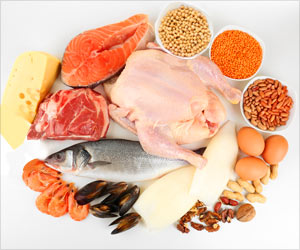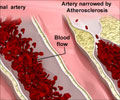A Paleo diet includes meat, seafood, fresh fruits and vegetables and nuts and seeds. A new study claims that Paleo diet protects the heart by reducing inflammation.
Highlights
- Paleo diet includes healthy and unprocessed foods that were available during the Paleolithic era
- Meat, fish, eggs, fruits, vegetables, nuts, herbs, and healthy fats comprise a Paleo diet
- Following a Paleo diet for eight weeks can improve heart health, claims a study
Impact of Paleo Diet on Heart Health
The study involved eight healthy people who usually consumed a traditional Western diet, which is high in processed foods. The participants were asked to follow the Paleo diet for eight weeks.After a period of eight weeks, the participants were checked for the levels of interleukin-10 (IL-10), a signaling molecule secreted by immune cells. The results showed that there was a 35 percent increase in the levels of IL-10.
Low levels of IL-10 is linked to increased heart attack risk in people who also have high levels of inflammation. Increased levels of IL-10 levels may counteract inflammation and improve heart health. The participants’ inflammation levels were not analyzed. But, the increase in IL-10 could suggest a lower risk for heart disease after following the Paleo diet. Changes in other biomarkers of inflammation were also reported. However, the researchers said that further investigation is needed to understand whether these changes indicate increased inflammation or a protective mechanism.
The current study was not designed to induce weight loss. However, the participants did experience weight loss during the eight-week trial. The participants had consumed 22 percent fewer calories and 44 percent fewer grams of carbohydrates on the Paleo diet when compared to their regular Westernized diet.
“Very few studies have examined the Paleo diet in seemingly healthy participants, despite the prevalence of this dietary practice in health and fitness enthusiasts,” said Chad Dolan, study author, a graduate student researcher at University of Houston Laboratory of Integrative Physiology.
“If our research continues to show that the Paleo diet produces detectable changes in healthy individuals, it will substantiate claims made by those supporting this diet for the past few decades and provide preliminary evidence for another therapeutic strategy for cardiovascular disease and coronary artery disease prevention,” said Dolan.
The limitation of the study is that the trial did not include a control group of people not following the Paleo diet. Thus it was difficult to determine if the changes of the inflammation biomarkers resulted from food choices, reduced consumption of carbohydrates, low calories or weight loss. The findings of the study are preliminary and incomplete. The research team plan to conduct the study involving more participants and to follow the diet for a longer period to analyze how the diet affects various risk factors for cardiovascular and coronary artery disease, cellular immune function and metabolic health.
The difference between Paleo diet and other diet is that it does not include whole grains and legumes, which are rich in essential vitamins, minerals, and fiber. Milk and milk products are also not included in the Paleo diet which are good sources of protein and calcium.
Foods Included in Paleo Diet
Meat, fish, eggs, fruits, vegetables, nuts and seeds, herbs and spices and healthy fats and oils.
Foods Excluded in Paleo Diet
Processed foods, sugar, soft drinks, grains, dairy products, legumes, margarine, trans fats
Other Proven Benefits of the Paleo Diet
Some short-term clinical trials have shown that Paleo diet can benefit health by
- Aiding in weight loss
- Improving glucose tolerance
- Reducing blood pressure
- Paleo diet: What is it and why is it so popular? - (http://www.mayoclinic.org/healthy-lifestyle/nutrition-and-healthy-eating/in-depth/paleo-diet/art-20111182)
















